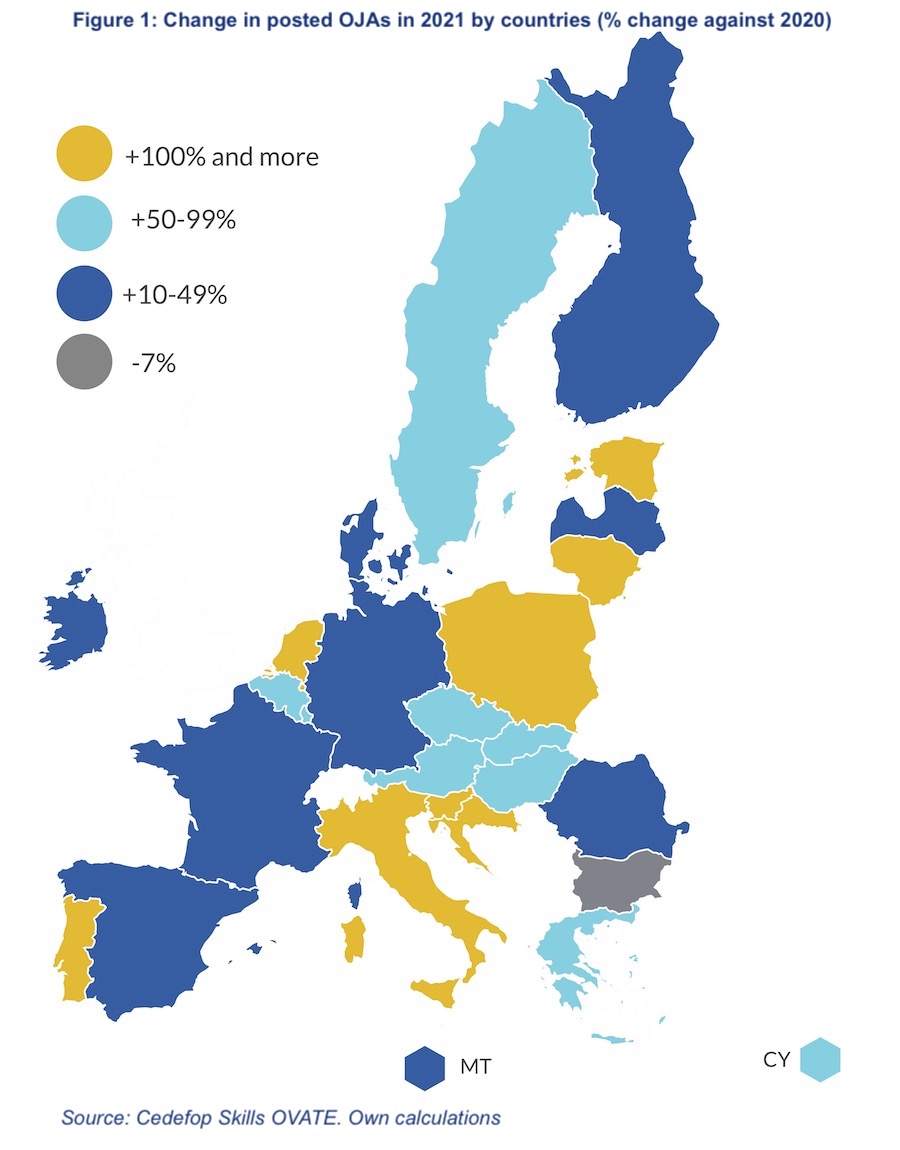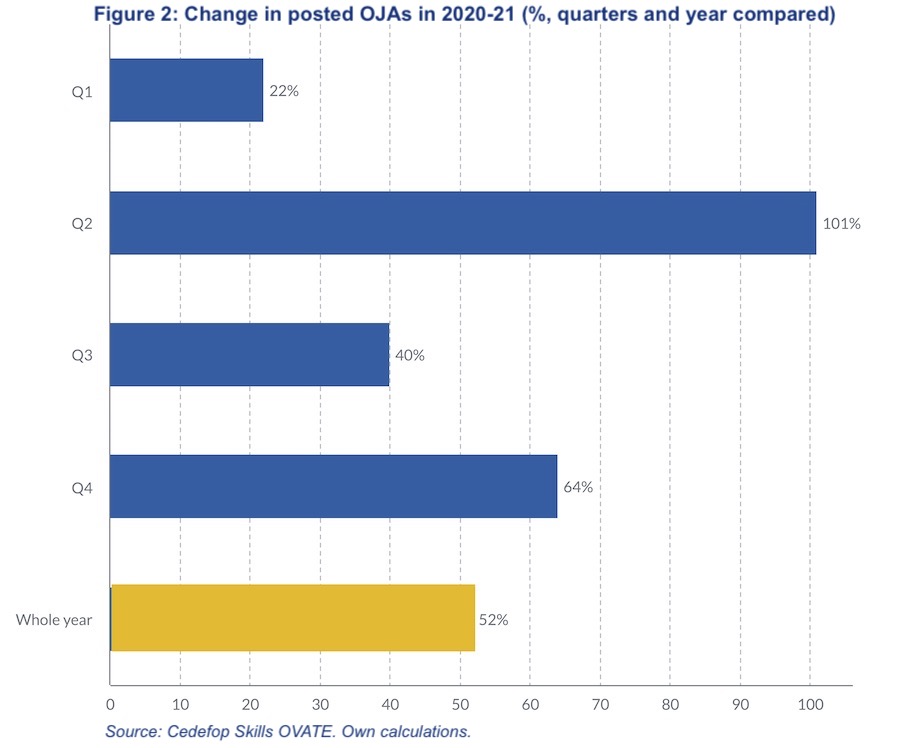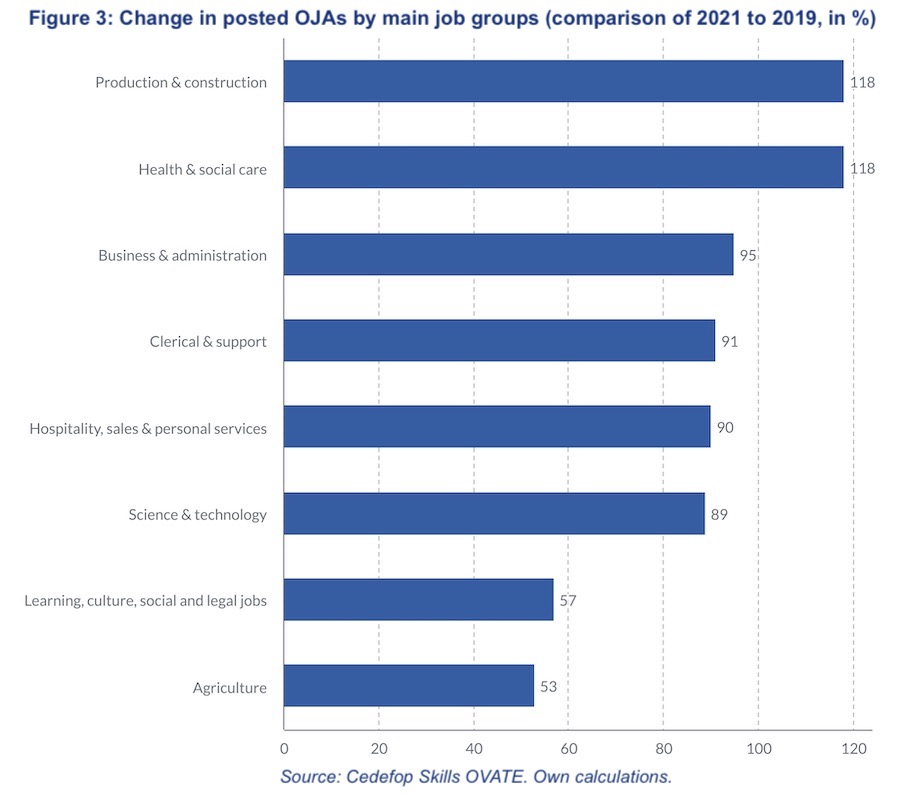An increase in online job advertisements (OJAs) shown in Cedefop’s Skills-OVATE tool suggests that Europe’s labour market bounced back in 2021 following the coronavirus-related disruption in 2020.
Skills-OVATE offers detailed information on the jobs and skills employers demand, based on online job advertisements (OJAs) in 28 European countries. The number of OJAs last year was 52% higher compared to the previous year and almost double compared to the pre-pandemic year 2019.
Cedefop’s Jiri Branka points out that, although such job posting intensity does not automatically translate into job creation and employment growth, the trends clearly suggest that the search for talent is on the rise, and business is becoming more optimistic as recovery progresses.
Apart from incorporating job ads collected in all 2021 quarters, Cedefop’s latest Skills-OVATE release also includes new data dashboards that give insight into skills and employment trends.
In seven EU Member States (Slovenia, The Netherlands, Croatia, Poland, Lithuania, Italy, and Portugal) the number of OJAs grew by 100% or more during 2021. Only in Bulgaria the number of OJAs posted declined slightly compared to 2020 (figure 1).

The growth of OJAs was most pronounced in the second quarter of 2021. Compared to the second quarter of 2020 – a period most affected by lockdowns and disruption of economic and social life – the number of OJAs more than doubled (figure 2).

The recovering OJA market reflects the adjustment of the European economy to emerging post-pandemic realities. Cedefop data shows that the labour market rebounded rather quickly. A significant uptick in OJAs was visible already in the second half of 2020, at a time when uncertainty about prospects and Covid-19 risks was comparable to the spring of that year when the pandemic hit full force.
Pandemic-driven shift to online job advertising
Apart from temporary changes in labour market dynamics, the pandemic has also had a more structural impact. It appears that social distancing measures contributed to an increasing use of recruitment via online job portals.
Compared to 2019, OJAs for positions in production and construction, and health and social care – jobs less advertised via digital means before the pandemic - grew fastest.
Other notable examples of profiles where a clear shift from traditional recruitment channels to online job ads was apparent include the hospitality, sales and personal services sectors. The increase in the number of such jobs posted online (91%) even exceeded the growth in science and technology jobs for ICT, science, and engineering professionals (figure 3).

While the above shows major trends in Europe’s online job markets, there is considerable potential to use Skills-OVATE to dig deeper in order to understand how the pandemic and its aftermath, as well as megatrends such as digitalisation and greening, are reshaping European labour markets.
In 2022, Cedefop will continue to expand its Skills-OVATE analysis with a view to monitor trends and inform and shape European VET and skills policy, and more data insights will follow in the coming weeks and months.


